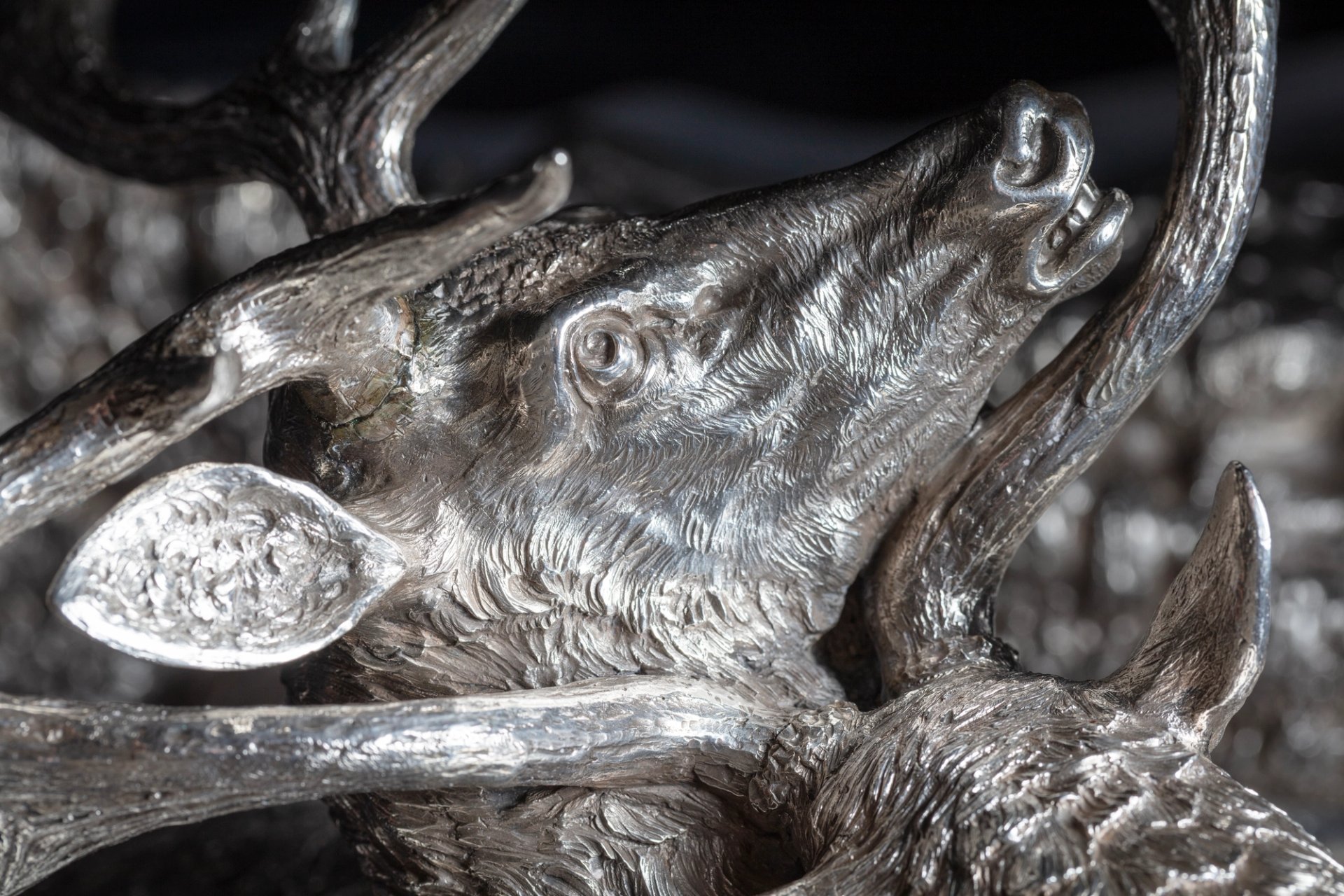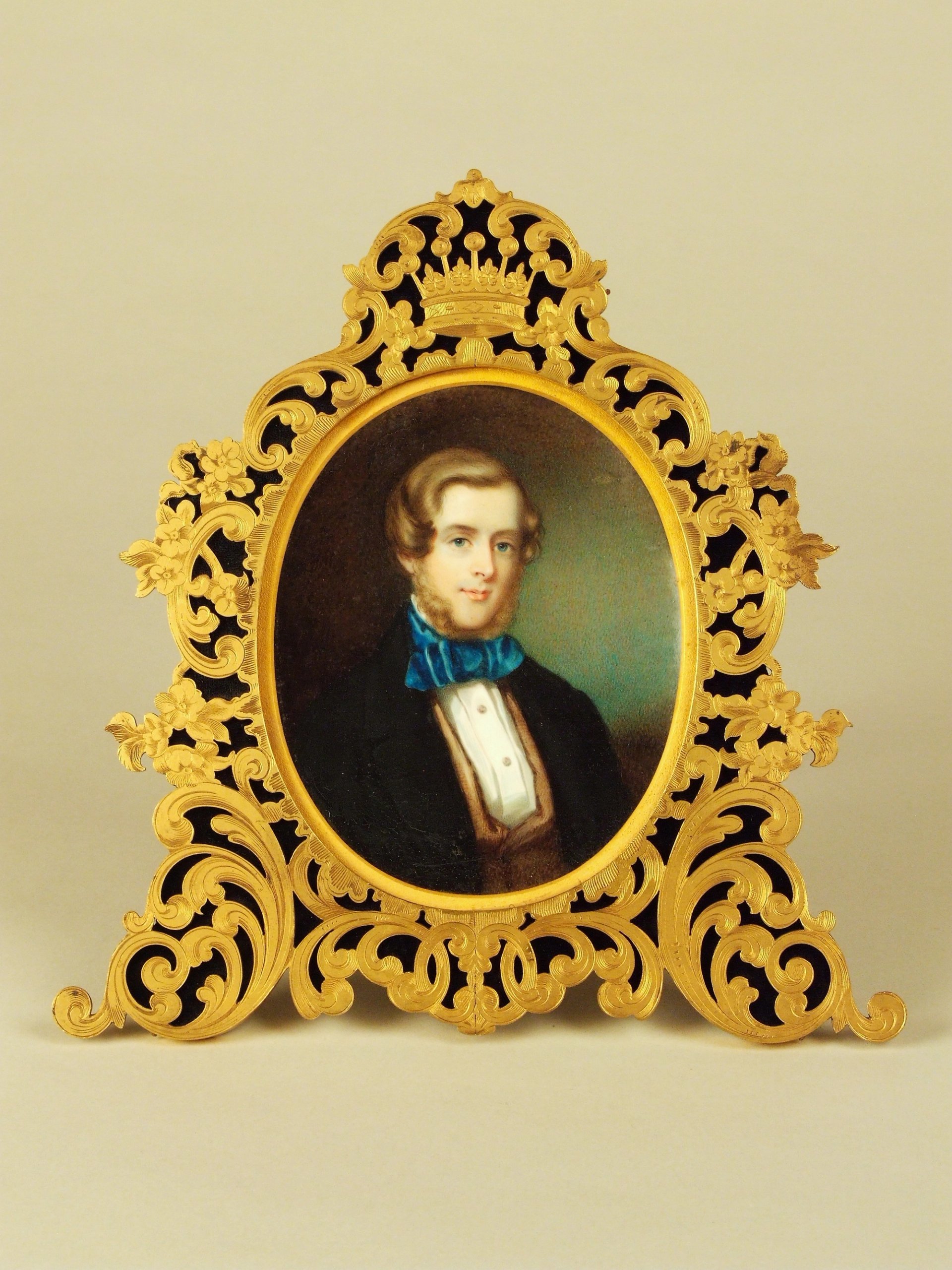A spectacular piece of Victorian silver, a table centrepiece for a grand banquet, has gone on display at a National Trust mansion in Cheshire, a century after it was thought melted down and lost forever. It recalls an equally spectacular Victorian love story of a spurned bride and a society scandal.
The massive silver sculpture of two stags locked in combat has gone on display at Dunham Massey, but it was made for another mansion after George Harry Grey, 7th Earl of Stamford, abandoned his family home in Cheshire, and moved with his wife Catherine Cox to Bradgate Park in Leicestershire.

A detail of the Stags of Bradgate Park © National Trust Images, James Dobson
The piece, the surviving central section of an originally much larger composition, represents the park landscape in meticulous detail, and is said to symbolise Grey locking horns with and defying society.
“Anyone who’s ever fallen in love with someone others didn’t approve of—whether it was your parents, your friends, or society itself—will feel something when they hear this story,” says Emma Campagnaro, the curator at Dunham Massey. “This piece of silver is a monument to love that refused to conform, and to the power of art to speak when words fail.”

George Harry Grey, 7th Earl of Stamford © National Trust Images
Catherine had a background as flamboyant as the silver. She had a claimed gypsy grandmother, and was beautiful, intelligent and kind. But she and her two sisters had starred as bareback riders, thrilling the crowds with stunts including leaping their horses through burning hoops at Astley’s Amphitheatre circus in London.
The county already regarded Grey as flakey. He was only 18 when he inherited the title, four vast estates, a house in London, and an annual income of £90,000 in 1845 from his grandfather, a man famously charitable to strangers and vile to his family. Despite family efforts to force him to sign a vow not to marry without their approval, his first bride when he was just 21 was a college servant and daughter of a Cambridge boot maker.
When she died in 1855 he married Catherine within the year. London society was appalled, but Cheshire was outraged. Queen Victoria is said to have refused to sit in the neighbouring box as the couple, but their treatment in Cheshire involved even more public humiliation. When they first visited a local church, wardens are said to have broken down the door to stop the ringing of a welcoming peal.
Later in 1855 the couple went to Knutsford races—Grey would run up huge debts in racing and gambling—where Catherine was greeted by a rampart of turned backs and raised parasols. Somebody hissed the word “strumpet” and that was it; the couple returned home and started packing. The house was emptied of its contents, everything driven away on a cavalcade of carts, and although Grey occasionally returned in the shooting season, Catherine never set foot there again.

Dunham Massey © National Trust Images
Grey died in 1883, but Catherine outlived him until 1910, well liked by sensible people for her kind heart and lavish charity—and she even managed to clear the debts he had run up. Roger Grey, the 10th and last earl, left Dunham Massey and the estate to the National Trust on his death in 1976, having spent a small fortune trying to reassemble the scattered family collection work the trust has continued (though the claimed works by Leonardo da Vinci and Titian may never have existed).
The silver, commissioned from the royal goldsmiths Hunt & Roskell in the year of the marriage, was as sensational as the marriage: it was featured in the Illustrated London News, and exhibited at the London International Exhibition of 1862 and the Paris Exposition Universelle of 1867. The centrepiece was recognised by the specialist dealers, A. Pash & Sons, and has now been acquired by the National Trust for an undisclosed sum.

